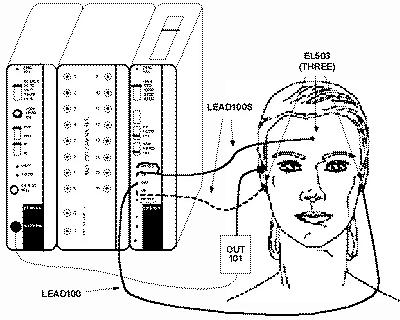Diagnosis
Before being diagnosed with Meniere's, you may have to have a series of tests:
Blood Tests - Blood tests rule out thyroid dysfunction, diabetes, high cholesterol, syphilis and autoimmune disorders.
 |
Electronystagmogram (ENG) - This is a balance test which involves placement of recording electrodes around the eyes. Movements of the eyes are recorded while changing positions of the head with respect to the earth's gravitational field. The eye movements are also recorded while cool and warm air or water is blown into the ear canal. The semicircular canals of the inner ear are sensitive to changes in temperature. When the inner ear is cooled or warmed, the effect is to lessen or heighten activity within the horizontal semicircular canal of the inner ear. The normal response is to feel vertigo during changes in temperature. The level of response to cool and warm stimuli is compared to the other ear. There is confirmatory evidence for Meniere's Disease when there is a decreased response to cool and warm stimuli in one ear.
 |
 |
| Electronystagmogram (ENG) |
Electrocochleogram (ECoG) - This is a specialized test which is performed by a qualified audiologist. Electrodes are inserted into the ear canal and around the ear and tones or clicks are used to stimulate the hearing mechanism. The waveform genereated by the inner ear (summating potential (SP)) and the waveform generated from the nerve behind the inner ear (action potential (AP)) are compared. With endolymphatic hydrops, the summating potential is enhanced and the action potential is unaffected, thereby enhancing the SP/AP ratio.
Auditory Brainstem Response (ABR) - The test is performed to help diagnose hearing loss, acoustic neuroma, dizziness and demyelineating diseases, such as multiple sclerosis and other nervous-system abnormalities. The ABR test is reliable, objective, noninvasive and painless. Brain wave activity in the auditory centers of the brain is recorded in response to a series of clicks presented to each ear. Thus, the ABR test indirectly estimates the level of hearing in the peripheral auditory system (middle ear and inner ear).
 |
| Auditory Brainstem Response (ABR) |
Audiogram - A hearing test in conducted in a sound-proof room by a qualified audiologist. The purose of the audiogram is to measure hearing to determine whether there is any hearing loss, and the frequencies at which the hearing loss occurs. To knowledgeable professionals, this apparently "simple" test can be an important tool for diagnosis as well as a measurement technique. Remember, that in Meniere's Disease, hearing loss fluctuates; therefore, comparison of one set of test results to another can be deceptive unless properly interpreted. How to Read Your Audiogram
 |
| Audiogram |
Magnetic Resonance Imaging (MRI) - This is a scan of the head with "contrast" (gadolinium). The purpose of the MRI is to determine whether there are any tiny tumors (acoustic neuromas) on the auditory/vestibular (8th cranial) nerve or other observable masses. Basics of MRI
 |
| The Imager |
Rotational Test - The purpose is to objectively measure the vestibular function in patients suffering from vertigo and other balance disorders, and to help distinguish between peripheral disorders affecting the brain. The patient sits in a chair with an electrical motor. The chair rotates from side to side, stimulating the semicircular (balance) canals, which, in turn, causes the eye muscles to move the eyes. Electrodes placed on the surface of the skin record the eye movement.
 |
| Rotational Test |
Platform Posturography - Computerized dynamic posturography is simply a test of your ability to maintain balance. You will be asked to stand quietly on a platform as shown in the photograph. During the test, you will be asked to open or close your eyes for brief periods of time. While you do so, the platform and/or the surrounding booth may or may not move. Your body will automatically respond to each test to maintain your balance. Should you lose your balance, a harness will prevent you from falling.
 |
|
Platform Posturography |